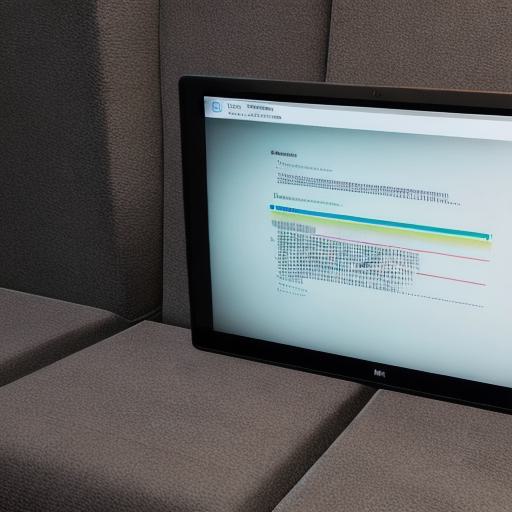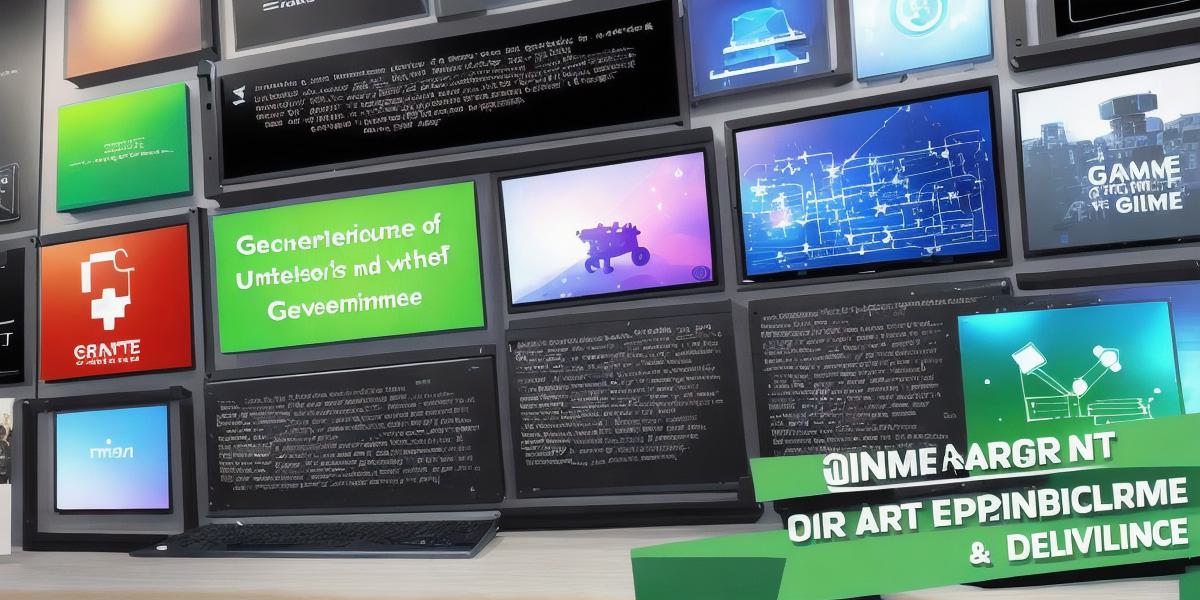Introduction
In recent years, the video game industry has experienced rapid growth, with an increasing number of people around the world engaging in gaming as a hobby or profession. As a result, there is a growing demand for skilled game developers who can create immersive and entertaining games that captivate audiences and keep them coming back for more. In this comprehensive guide, we will explore the art and science behind game development, delving into the key components of creating engaging and successful games. Whether you are an experienced game developer or just starting out, this guide will provide you with valuable insights and practical tips to help you improve your craft and achieve success in the world of gaming.
The Creative Process of Game Development
Game development is a creative process that involves a combination of art and science. It requires a deep understanding of human psychology, creativity, and game theory, as well as technical skills in programming, design, and animation. To create a successful game, game developers must navigate through various stages of the creative process, including idea generation, prototyping, design, development, testing, and iteration.
Idea Generation: The First Step
The first step in game development is generating ideas for games. This involves brainstorming sessions where developers come up with innovative concepts and themes that will appeal to their target audience. Game ideas can be inspired by anything from pop culture, real-life experiences, or even dreams. Some of the most successful games have been born out of unexpected or unusual ideas, such as Minecraft, which was initially a simple block-building simulation game that eventually evolved into a massive online multiplayer community.
Prototyping: Bringing Ideas to Life

Once game ideas have been generated, the next step is to create a prototype, which is a basic version of the game that demonstrates its core mechanics and features. Prototypes can be created using various tools and technologies, including game engines, programming languages, and 3D modeling software. The goal of prototyping is to test different design concepts and iterate on the game until it is ready for development.
Design: The Blueprint of the Game
The design stage is crucial in game development as it involves creating a detailed blueprint of the game that outlines its mechanics, characters, levels, and other key elements. This requires a deep understanding of game theory, player psychology, and user experience (UX) design principles. Game designers must balance the need for innovation with the need for familiarity, creating a game that is both unique and accessible to players.
Development: Turning Ideas into Reality
The development stage involves implementing the design blueprint and turning it into a fully functional game. This requires technical skills in programming, game engines, and other development tools. Game developers must be able to optimize their code for performance, ensure smooth gameplay, and fix bugs quickly. Additionally, they must work collaboratively with other members of the team, including artists, sound designers, and QA testers, to create a cohesive and polished game.
Testing: Quality Assurance
Once the game has been developed, it undergoes rigorous testing to ensure that it is free from bugs, glitches, and other issues that could affect its performance or user experience. Game developers must be able to identify and fix these issues quickly to maintain player satisfaction and ensure the success of the game.
Iteration: Refining and Improving the Game
Finally, game development involves a process of iteration, where developers continually refine and improve the game based on feedback from players, critics, and other stakeholders. This requires a willingness to listen to others and be open to change, as well as the ability to make difficult decisions about which features to include or exclude from the final product.
Technical Skills Required for Game Development

While creativity is essential in game development, technical skills are also crucial. Game developers must have a strong foundation in programming languages, game engines, and other development tools. They must be able to create efficient and optimized code, work with complex data structures, and debug issues quickly. Additionally, they must have a basic understanding of mathematics and physics, as these are fundamental to creating realistic and engaging game mechanics.
Artistic Skills Required for Game Development
In addition to technical skills, game developers must also possess artistic skills such as drawing, 3D modeling, animation, and sound design. These skills are essential in creating the visual and auditory elements of the game that bring it to life and enhance player immersion. Moreover, artists must be able to work collaboratively with other members of the team, including game designers and programmers, to ensure that their creative vision is implemented accurately and efficiently.
The Role of Teamwork in Game Development
Teamwork is essential in game development as it requires a diverse range of skills and expertise. Game developers must be able to work collaboratively with other members of the team, including artists, sound designers, QA testers, and project managers. This requires strong communication skills, the ability to delegate tasks effectively, and a willingness to give and receive constructive feedback.
Real-Life Examples of Successful Game Development
To illustrate the key concepts and principles discussed in this guide, let us examine some real-life examples of successful game development. These examples demonstrate how different teams of developers have navigated the creative process of game development, leveraging their technical and artistic skills to create immersive and engaging games that have captured the hearts and minds of millions of players around the world.
Minecraft: A Game Born out of a Simple Idea
Minecraft is one of the most successful video games of all time, with over 200 million copies sold worldwide. The game was initially created by Markus Persson, who started working on it in his spare time while studying computer science at Lund University in Sweden. Persson’s goal was to create a simple block-building simulation game that would allow players to create and explore their own virtual worlds. However, as he continued to develop the game, he realized that it had the potential to be much more than just a simple pastime.
Persson enlisted the help of other developers, including Jens Bergensten, Daniel Rosenfeld, and Patrik Sjogren, who helped him refine the game’s mechanics and add new features such as mobs, redstone, and enchantments. The team worked tirelessly to optimize the game for performance, fix bugs, and improve the user experience.
Minecraft’s success can be attributed to its innovative concept, which combined elements of sandbox games, adventure games, and role-playing games. Additionally, the game’s open-world design allowed players to explore and create their own virtual worlds, fostering a sense of community and player engagement that has kept the game popular for over a decade.
The Legend of Zelda: Breath of the Wild: A Game That Pushed the Limits of Gameplay
Another example of successful game development is The Legend of Zelda: Breath of the Wild, which was released in 2017 by Nintendo. The game was a groundbreaking departure from previous Zelda games, featuring an open-world design that allowed players to explore a vast and immersive game world filled with secrets and hidden treasures.
The development team, led by director Hideto Fukurai, worked tirelessly to create a game that pushed the limits of what was possible in terms of gameplay mechanics, graphics, and storytelling. The team used cutting-edge technology to create realistic weather and day/night cycles, dynamic lighting, and other visual effects that enhanced player immersion and made the game world feel more alive.
Breath of the Wild’s success can be attributed to its innovative design, which combined elements of action-adventure games, role-playing games, and puzzle games. Additionally, the game’s open-world design allowed players to explore and discover new content at their own pace, fostering a sense of ownership and investment in the game world that has kept players engaged for hundreds of hours.
Summary
Game development is a complex and creative process that requires a diverse range of technical and artistic skills. Successful game development requires a willingness to take risks, collaborate with others, and constantly refine and improve the game based on feedback from players and stakeholders. By understanding the key concepts and principles discussed in this guide, aspiring game developers can embark on their own journey of creative expression and achieve success in this exciting and rapidly evolving field.



